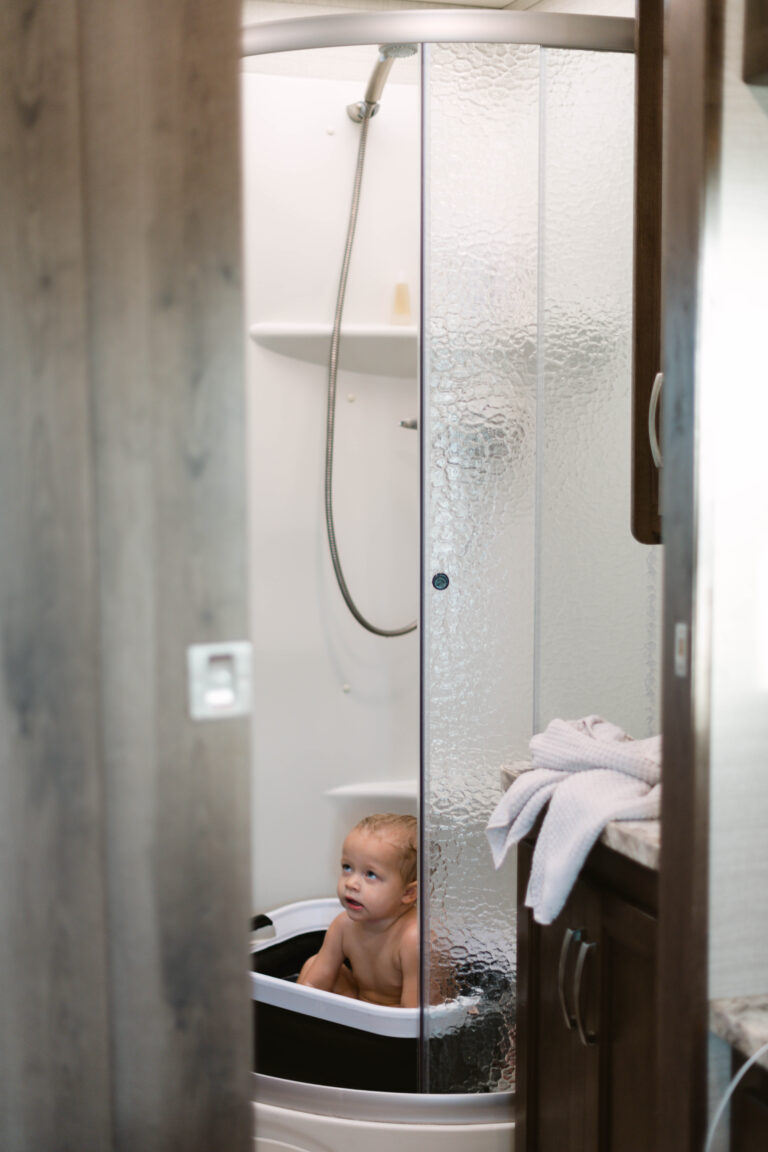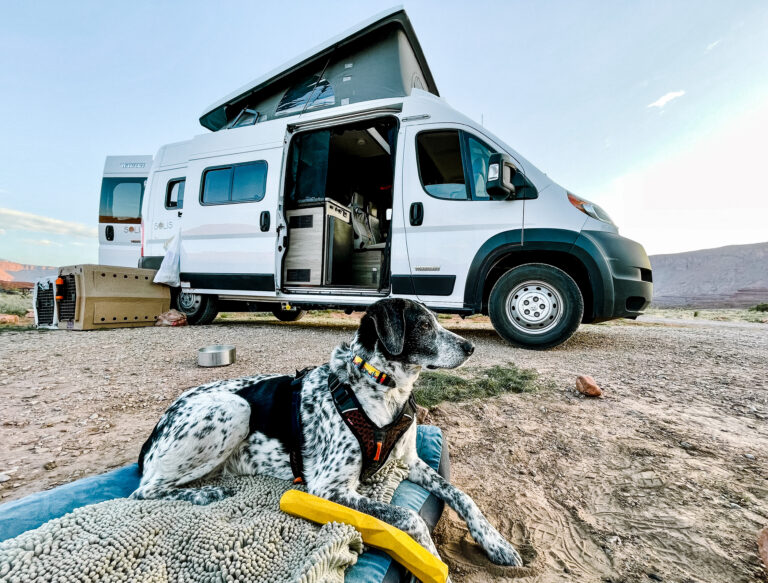
Water—it’s one of the foundations of life. More than 60 percent of the human body is made of water, and although you can live for a month without food, you wouldn’t last a week without water. Fortunately, in first-world countries, access to clean water usually isn’t a problem.
But what about when you are camped way out in the wild with no access to a water spigot?
Boondocking, or camping away from an established campground with no access to utility hook-ups, can be a test of your self-reliance. Especially when it comes to water. When boodocking you only have the water you bring with you, including the supply in your fresh water tank and any extra jugs you bring along. A limited supply of water means it’s time to employ some water-saving tactics. Before your next trip, take a look at the following water-saving tips.
1. Use Less in the Kitchen
Use paper plates and prepare “one-pot” meals to avoid using water for washing plates and pans. Also, wet clean-up towelettes, such as Lysol anti-bacterial wipes, are great for sanitizing surfaces without water. Spraying a paper towel with a manufactured cleaner or even a vinegar solution will perform the same job.
2. Wash Dishes in a Bucket
When you wash your pots and pans in a bucket you will use less water than if you wash them in the sink. Also, the water doesn’t go down the drain and fill up your gray water tank. It can be collected and re-used for activities that don’t require the water to be entirely clean.

3. Gather Your Water
There are many degrees of water cleanliness. The cleanest water should be used for things going into your mouth, such as cooking, drinking, and brushing your teeth, and then maybe rinsing your body. Everything else can use the “mostly clean” water that has been gathered from the run-off of those activities. For example, water you wash dishes with can be used to flush the toilet. Hair rinsing or toothbrush rinsing water can be reclaimed and reused for rinsing out your razor, etc. Keep a bucket in the shower to collect water for future toilet flushing.
Another water-saving tip is to use a small bucket or a large bowl to collect bathroom faucet water while you are waiting for it to warm. This is clean water that can be used for any number of things.
4. Turn Off the Water
Don’t let the water run. Turn the water off when you are cleaning your dishes. Turn it off while you are brushing your teeth or shaving. It may feel good to stand under a warm running shower, but it is wasteful and not a good way to save water!
5. Shower and Shave Hack
For women who want to maintain smooth legs while boondocking, save water by using the old-fashioned method for rinsing the razor. Simply plug the shower drain and capture water for rinsing. The water doesn’t need to be pristine to get the job done.
6. Take Fewer Showers
When possible, go a day or two without showering. Baby wipes are a good option for cleaning your hands, and usually do a decent job tidying the rest of your body between showers.
7. Take Shorter Showers
Consider installing a showerhead that has an on/off control valve. This allows you to easily turn the water on to get wet, and off when you are sudsing up. This practice is commonly referred to as a navy shower and can save a ton of water. Keep in mind that while you can turn the water off at the main control, you often lose the heat, which requires you to run the water again to warm it back up. Plus, turning the knobs off and on takes more time than a control valve, and the faster the water turns off, the less water you’ll use.
8. Consider Your Hair
Believe it or not, another water-saving tip is to cut your hair short. It is easier to maintain short hair, and it takes less time to wash. Less time equals less water.
If you do have long hair, try a dry shampoo product to keep it clean and oil-free in between shampoos. For a more natural option, rub a little cornstarch or baking soda over your scalp and through your hair. This absorbs oil and provides a few more days of apparent cleanliness between washings.
9. Consider Your Shower Companions
No, that doesn’t mean pair up in the shower (although that may be another way to use less water), it means to consider the body wash or soaps and shampoos you choose. Many options contain sodium laureth sulfate. Not only is it not terribly healthy, but it is the ingredient that causes the products to lather. More lather means more water for rinsing.
10. Avoid Flushing
Another water-saving tip is to avoid flushing the toilet. Using your precious fresh water to flush the toilet can seem frivolous. Fortunately, you have a few options.
- Install a gray water recycling system
- Install a composting toilet
- Add a waste odor neutralizer and avoid flushing urine
- Use a nearby toilet
- Go outside (provided you are out in mother nature, and not, say…the Cabela’s parking lot).
11. Avoid Flushing Toilet Paper
Flushing toilet paper takes more water than anything else being rinsed down the drain. When possible, place used TP in a sealable plastic baggie and throw it in the wastebasket—preferably a lidded one. Or, carry it to a nearby outdoor trash receptacle.
In Conclusion
Although all of these techniques will help conserve water when you are boondocking, not all will be agreeable to all campers. Also, depending on where you are camped, some of these water-saving tips may not be a viable option. For example, if you are parked in a Walmart parking lot, going inside to use the restroom facilities would be a way to reduce your RV water use. While urinating outside to avoid needing to flush the toilet would not.
If you find these ideas helpful, please share them with your friends and family. Nothing will ruin your vacation in nature quicker than running out of water.
